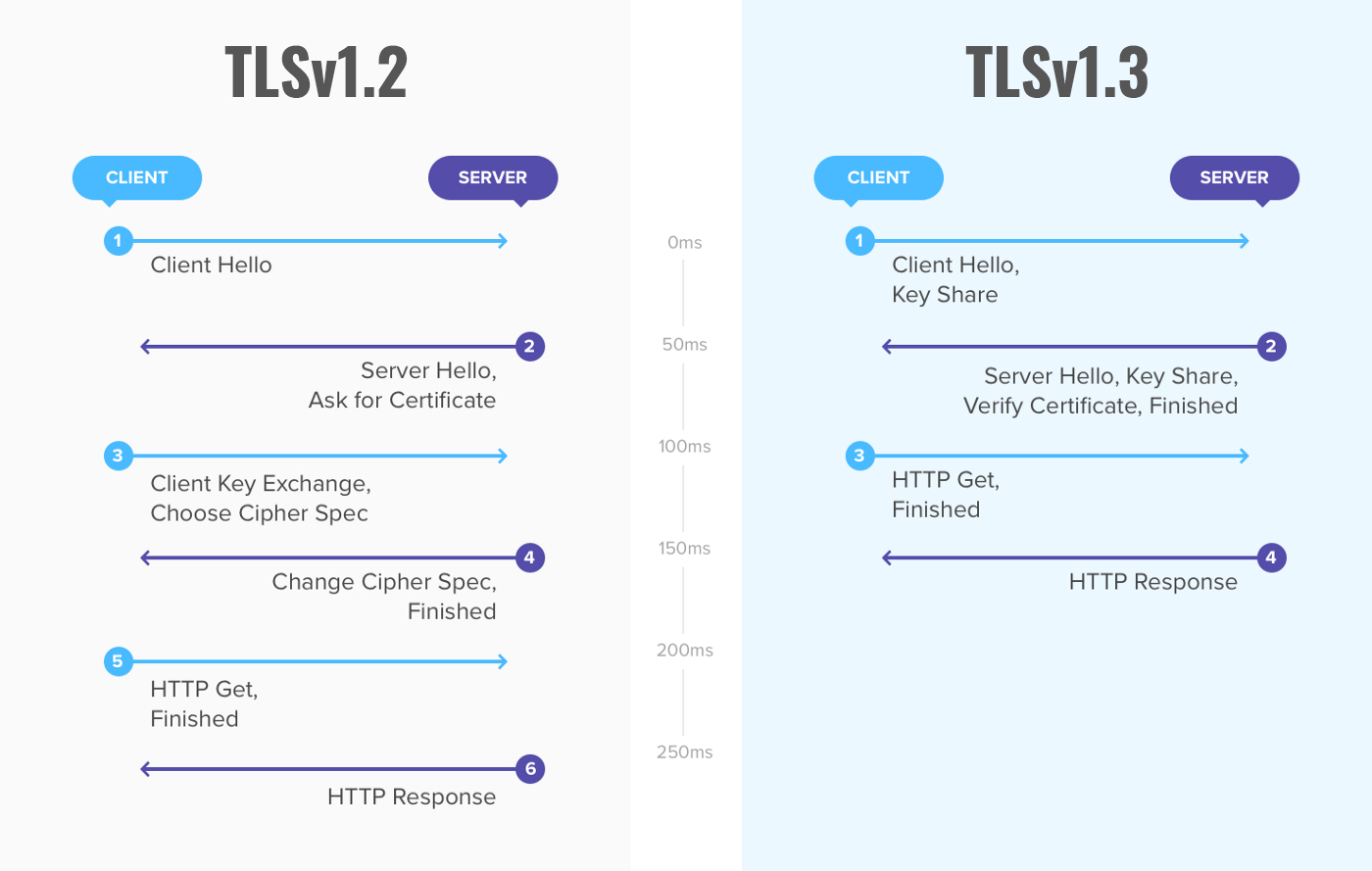What are the differences between TLS 1.2 and TLS 1.3? Why is it necessary to upgrade to the latest version of cryptographic protocol?
Web "best practices" guides tell us that from a security point of view, the host server must have activated TLSv1.3. Thus, when a user connects to a website, it is expected that the data transmitted over the Internet will remain confidential. Be sent encrypted and cannot be intercepted by a third party. For example when we do a online payment, the web page where we enter our confidential data must provide us with a protocol securizat. A connection HTTPS secured (SSL) Secure Socket Layer / ((TLS) Transport Layer Security.
Current Internet browsers provides support both for TLS 1.2 as well as for TLS 1.3, but the protocol TLS 1.3 is the recommended one, coming with two important advantages. Speed and security.
What are the differences between TLS 1.2 and TLS 1.3?
Security and data exchange speed client – server are the differences between TLS 1.2 and newer version TLS 1.3.

As can be seen in the image above, TLS 1.2 it needs two roads in addition to the version TLS 1.3. This means higher latency in the client-server connection than the cryptographic protocol TLS 1.3. A complete secure connection is made in about 150ms, while for TLS 1.2 time is about 250ms.
Reduction of completion time of the client-server connection by eliminating some algorithms means a higher speed of loading a web page and a better customer experience.
Connection HTTPS is done faster with the protocol TLS 1.3 by removing the number of connections between the host server and the client that connects to it when accessing a web page.
In conclusion, the differences between TLS 1.2 and version TLS 1.3 are: speed of client-server connection completion (or latency), security increased (by eliminating the number of queries and encryption), the experience the customer.
For a web server to be able to serve web pages to all clients (internet browsers), it must support all protocols. SSLv3, TLSv1, TLSv1.2, TLSv1.3.